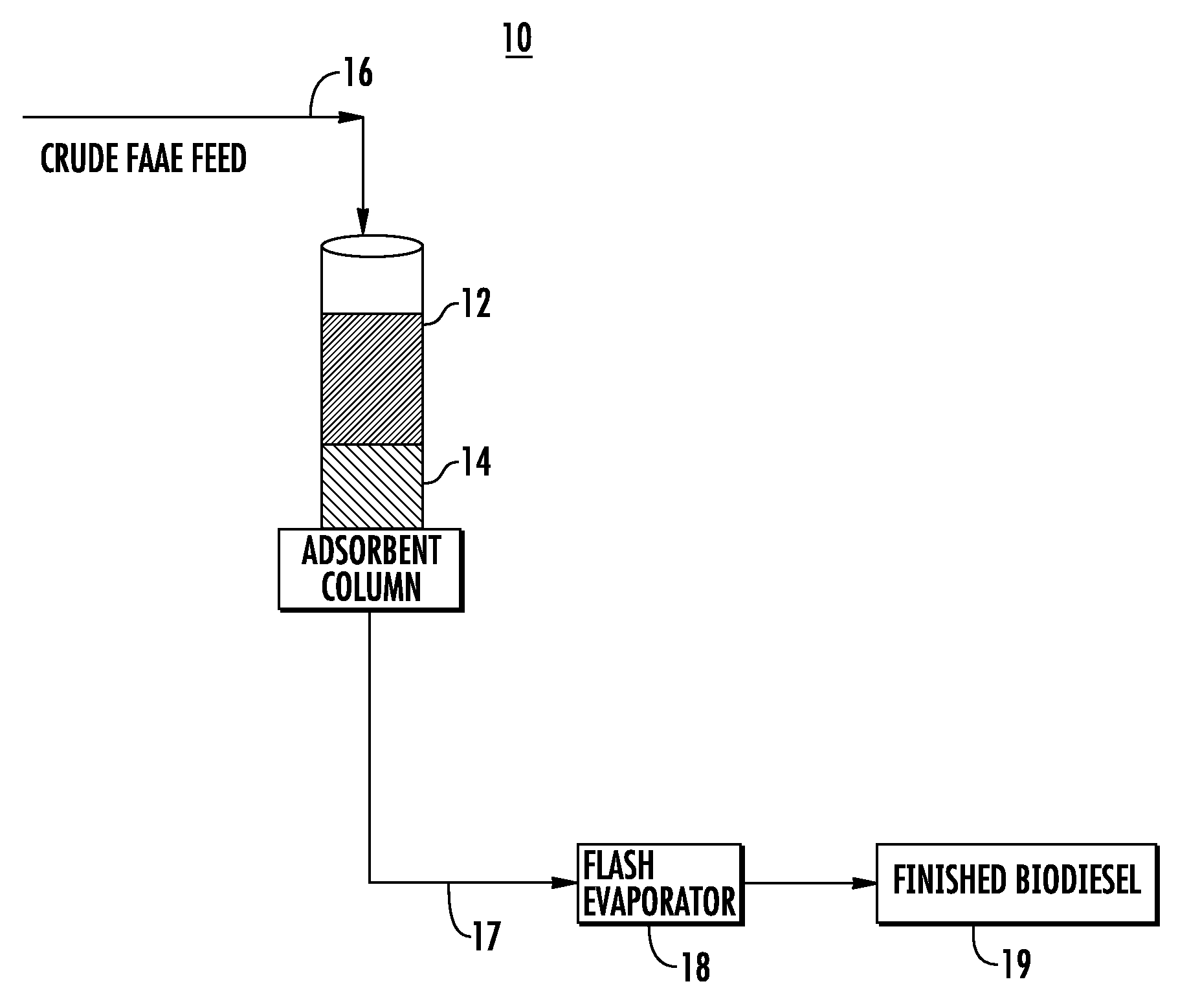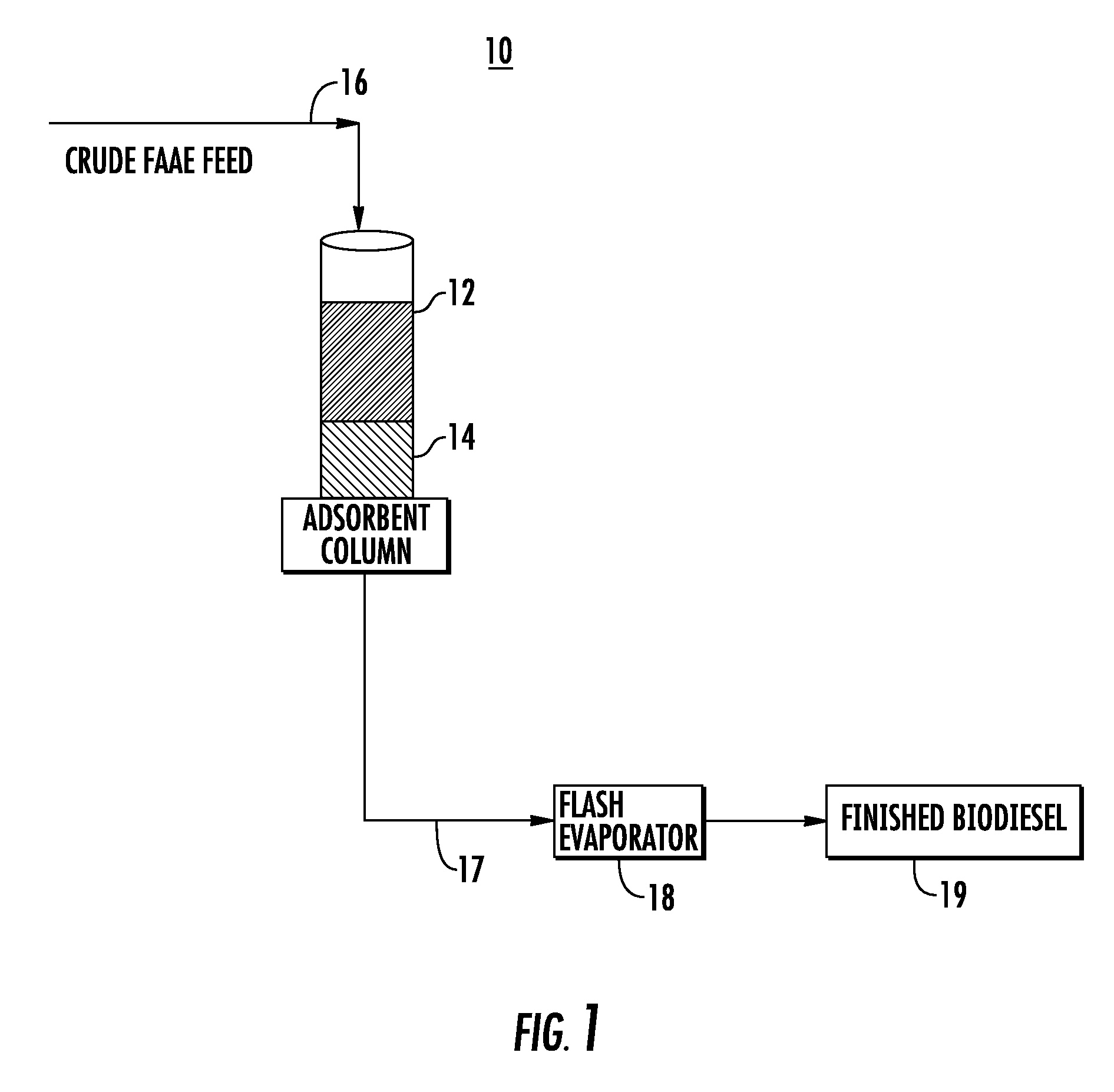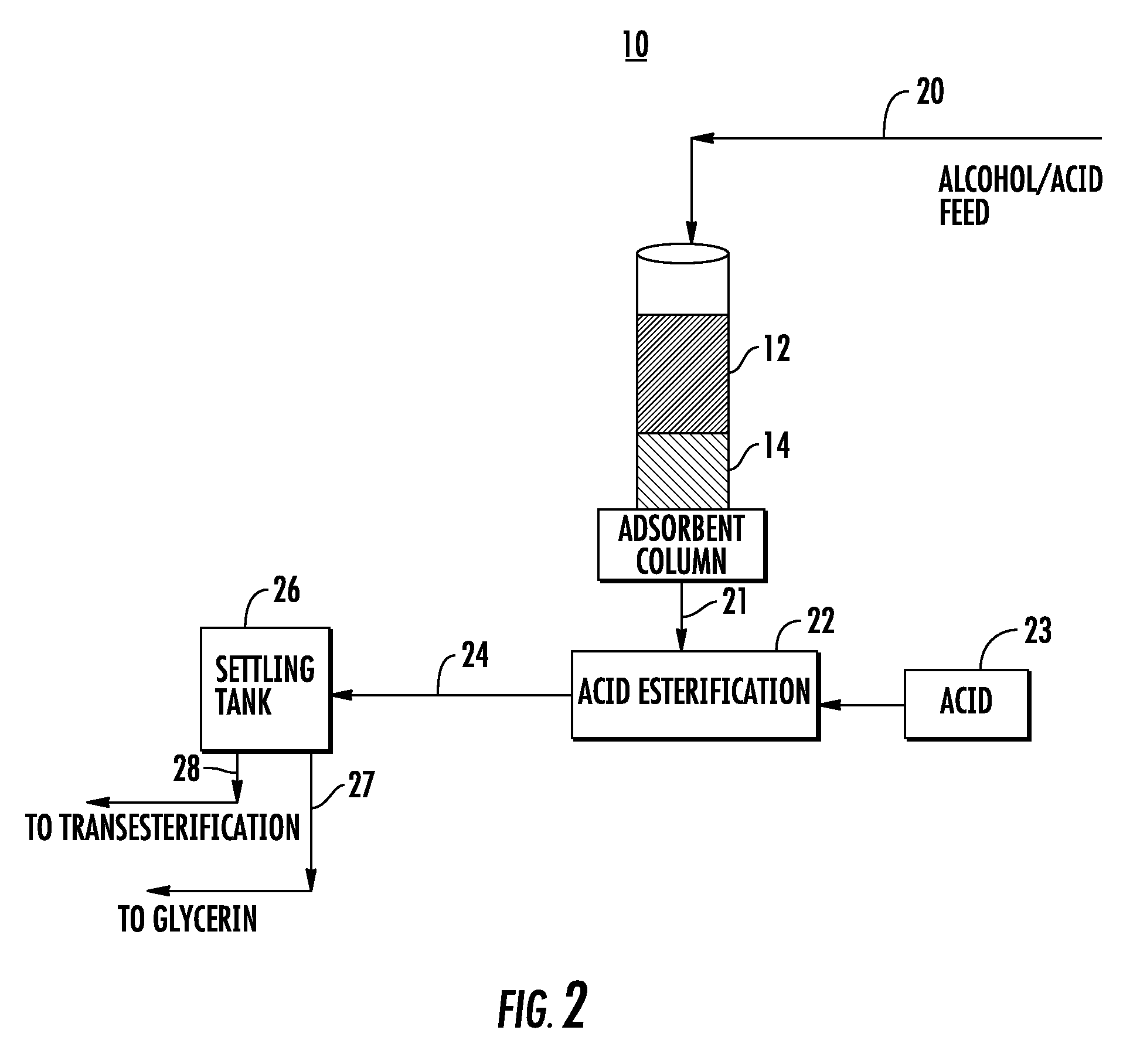Biodiesel purification by a continuous regenerable adsorbent process
a biodiesel and adsorbent technology, applied in the direction of fatty oil/fat refining, water/sewage treatment by ion exchange, separation with moving sorbents, etc., can solve the problems of inability to re-use for the removal of metals from crude biodiesel, and the economic suitability of ion exchange resin for purification alone, so as to reduce the stability of biodiesel
- Summary
- Abstract
- Description
- Claims
- Application Information
AI Technical Summary
Benefits of technology
Problems solved by technology
Method used
Image
Examples
example 1
Single Column Purification Using Adsorbent Materials
[0051]Crude biodiesel was passed through a single column containing 2 g adsorbent material. The two adsorbents used in the example were: synthetic magnesium silicate (MAGNESOL® D-SOL D60 from The Dallas Group of America, Whitehouse, N.J.) and an acid activated clay (REFOIL RO-365 from Refoil Earth Pvt. Ltd., Vadodara, India). A summary of the results obtained from these two products is shown in Table 1. The crude biodiesel was passed through the column until such time that the soap content of the biodiesel exiting the column was greater than 50 ppm. The value of 50 ppm soap was chosen as the cutoff point as it corresponds to the 5 ppm specification of metals (sodium+potassium).
[0052]At such time that the biodiesel exiting the column contained more than 50 ppm soap, the column treatment was stopped and either the synthetic magnesium or the acid activated clay in the column was regenerated. A solution containing 0.10% sulfuric acid (...
example 2
Comparative Examples of Ion-Exchange Resin for Regeneration
[0054]Crude biodiesel was passed through a single column containing 2 g ion-exchange resin (AMBERLITE BD10DRY from Rohm and Haas, West Philadelphia, Pa.). The crude biodiesel was passed through the column until such time that the soap content of the biodiesel exiting the column was greater than 50 ppm. The value of 50 ppm soap was chosen as the cutoff point as it corresponds to the 5 ppm specification of metals (sodium+potassium). The results from the use of AMBERLITE BD10DRY are shown in Table 2.
[0055]At such time that the biodiesel exiting the column contained more than 50 ppm soap, the column treatment was stopped and an attempt to regenerate the ion-exchange resin in the column was made. A solution containing 0.10% sulfuric acid (93%) in methanol was passed through the column and the resulting soap content of the methanol exiting the column was periodically checked. There was no measurable soap content in the methanol / su...
example 3
Dual Column Purification Using Synthetic Magnesium Silicate
[0057]Crude biodiesel was passed through a two column system in series containing 2 g adsorbent material in each column. The two adsorbents used in the example were: synthetic magnesium silicate (MAGNESOL D-SOL D60 from The Dallas Group of America, Whitehouse, N.J.) and an acid activated clay (REFOIL RO-365 from Refoil Earth Pvt. Ltd., Vadodara, India). A summary of the results obtained from these two products is shown in Table 3. The crude biodiesel was passed through the column until such time that the soap content of the biodiesel exiting the column was greater than 50 ppm. The value of 50 ppm soap was chosen as the cutoff point as it corresponds to the 5 ppm specification of metals (sodium+potassium).
[0058]At such time that the biodiesel exiting the column contained more than 50 ppm soap, the column treatment was stopped and either the synthetic magnesium silicate or acid activated clay in the lead column was regenerated...
PUM
| Property | Measurement | Unit |
|---|---|---|
| Fraction | aaaaa | aaaaa |
| Fraction | aaaaa | aaaaa |
| Percent by mass | aaaaa | aaaaa |
Abstract
Description
Claims
Application Information
 Login to View More
Login to View More - R&D
- Intellectual Property
- Life Sciences
- Materials
- Tech Scout
- Unparalleled Data Quality
- Higher Quality Content
- 60% Fewer Hallucinations
Browse by: Latest US Patents, China's latest patents, Technical Efficacy Thesaurus, Application Domain, Technology Topic, Popular Technical Reports.
© 2025 PatSnap. All rights reserved.Legal|Privacy policy|Modern Slavery Act Transparency Statement|Sitemap|About US| Contact US: help@patsnap.com



